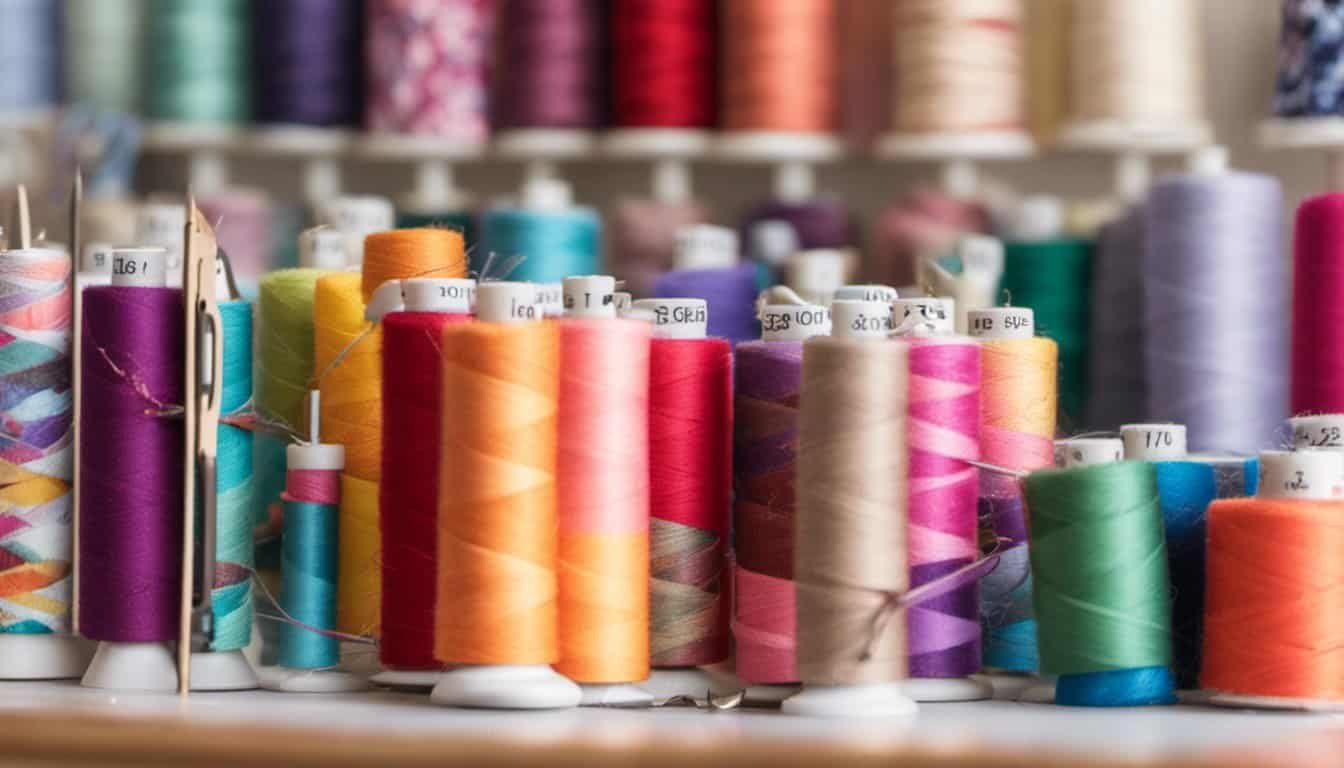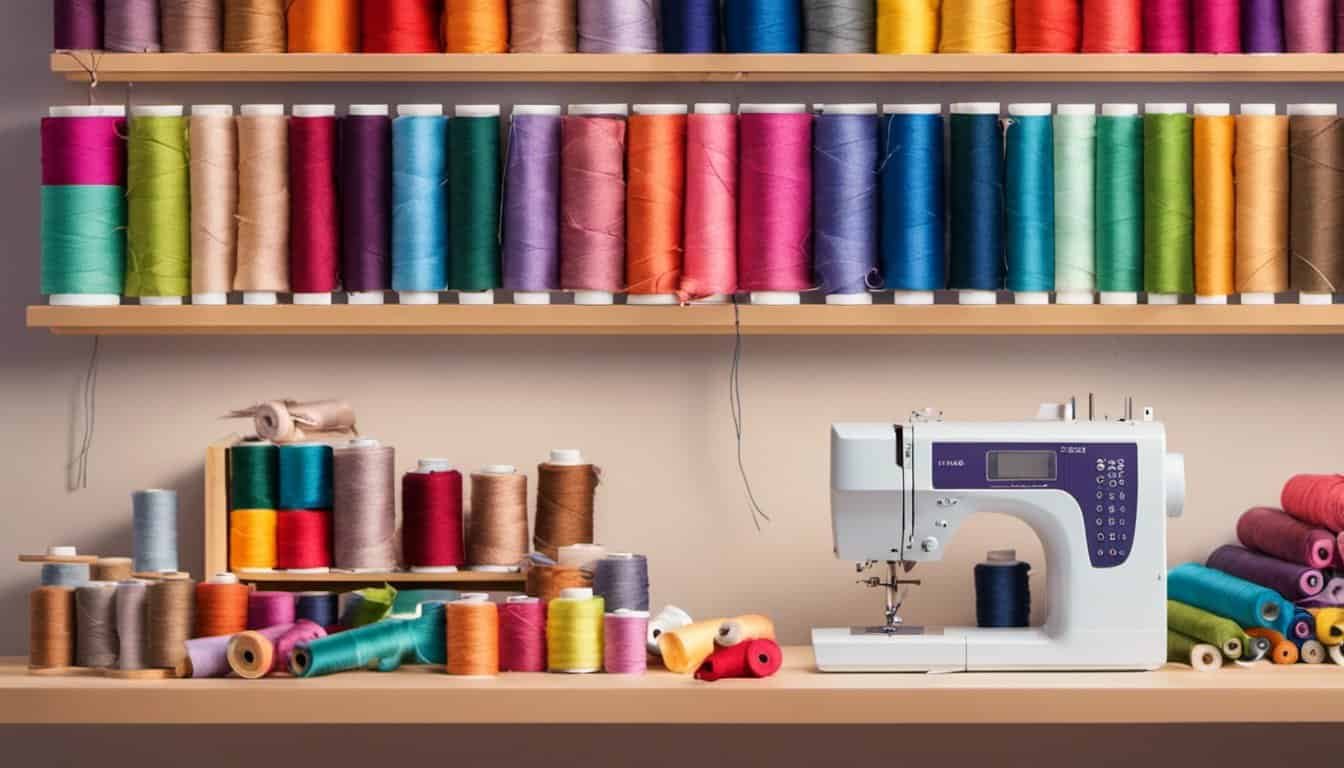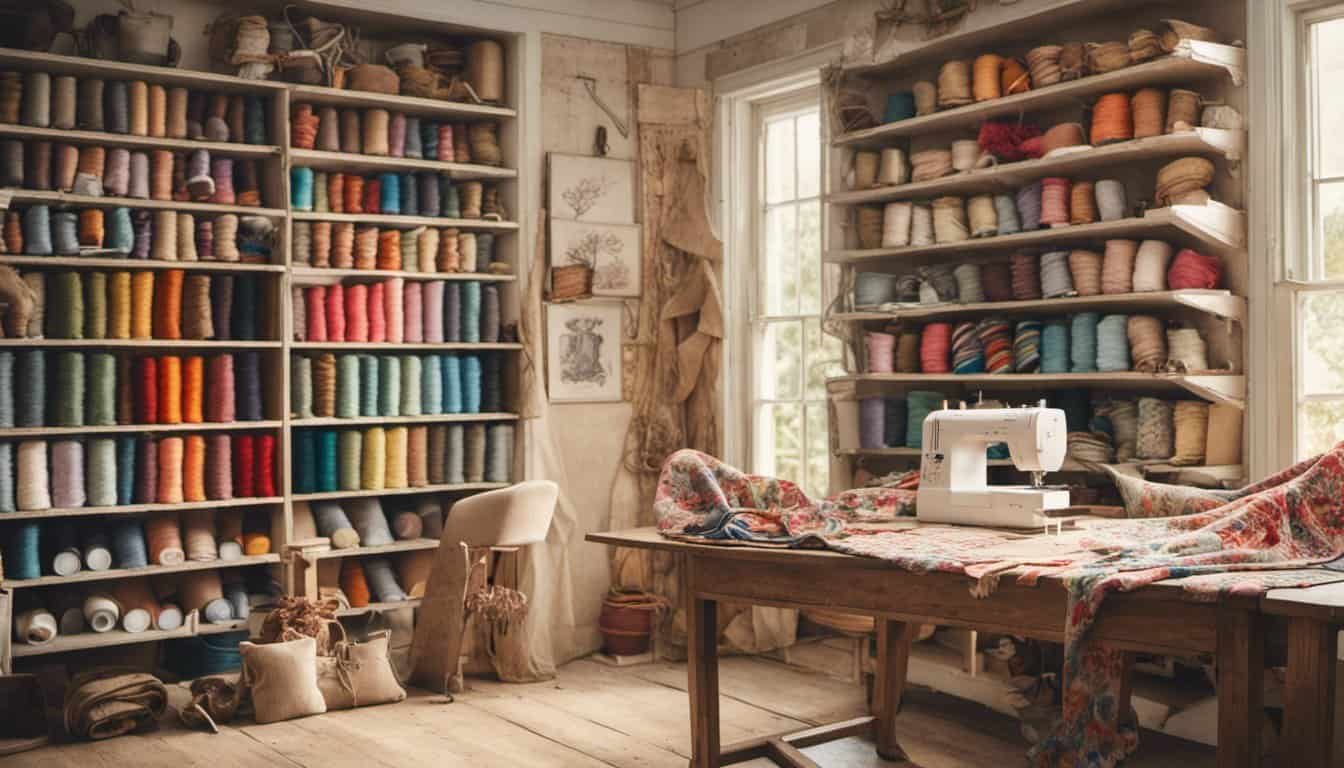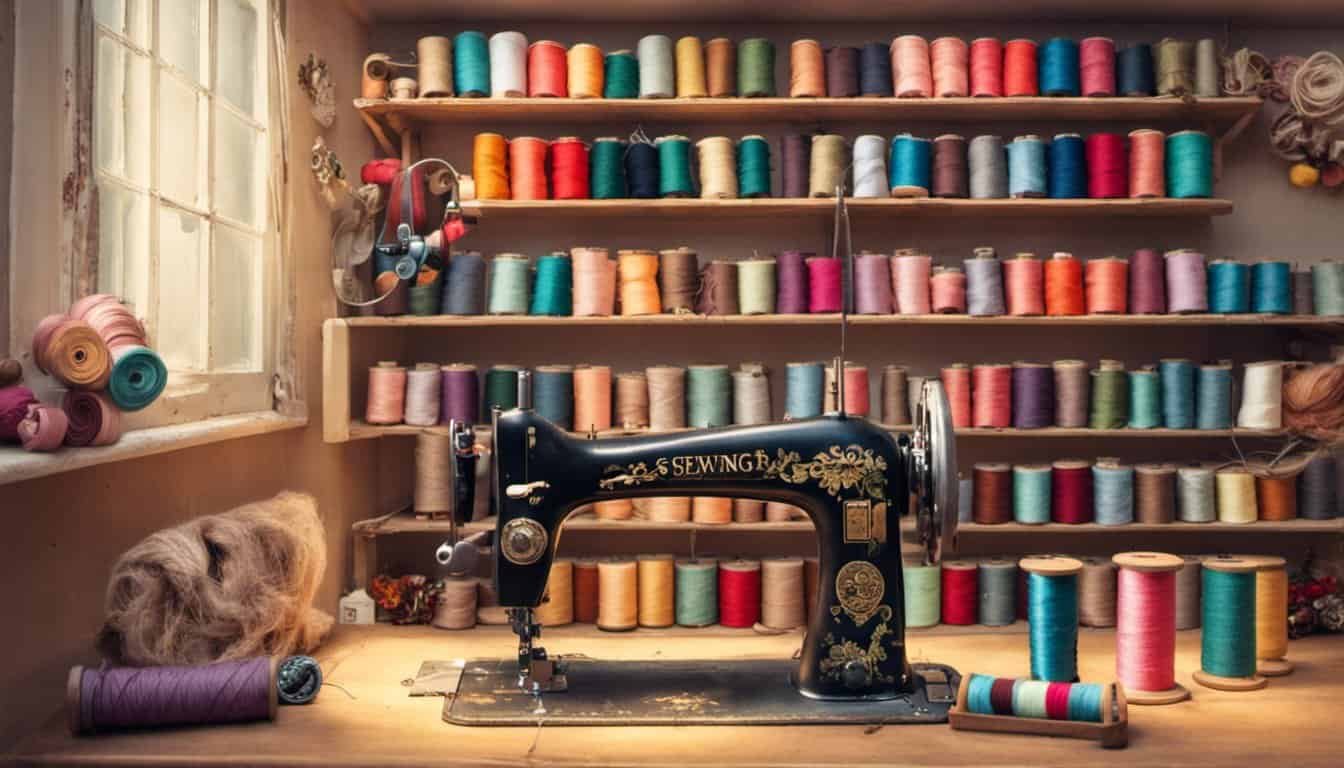Are you passionate about sewing? Whether you’re a beginner or an experienced seamstress, it’s crucial to prioritize safety in your sewing practice. In this article, we’ll explore why sewing safety is so important and provide you with essential tips to keep you safe while indulging in your creative projects. From preventing accidents to ensuring the longevity of your sewing equipment, understanding and implementing safety measures will not only protect you but also enhance your overall sewing experience.
When it comes to sewing, safety should always be at the forefront of your mind. Not only can accidents cause injury, but they can also lead to damage to your sewing machine or other equipment. By taking the necessary precautions, you can minimize the risk of accidents and maintain the quality and functionality of your sewing tools. So, let’s delve into the reasons why sewing safety is a vital aspect of your sewing journey.
Importance of Sewing Safety
As a seasoned seamstress or a budding crafter, it’s important to understand the significance of sewing safety. Implementing safety measures not only protects you from accidents but also keeps your sewing equipment in top-notch condition. It’s time to delve into why sewing safety should be your top priority.
Safe and Sound
When you prioritize sewing safety, you ensure that you and those around you stay safe while engaging in this wonderful hobby. Sewing involves sharp tools like needles, scissors, and pins, which can cause injuries if not handled properly. By following safety guidelines, you can reduce the risk of accidents and keep your hands and fingers intact.
Happy and Hassle-free
Maintaining a safe working environment enhances your overall sewing experience. By having clear workspace organization and appropriate lighting, you can avoid unnecessary clutter and reduce the chances of accidents. Sewing safety also includes wearing appropriate clothing, like closed-toe shoes and non-loose garments, which prevent fabric from getting caught in the machine.
Long-lasting Equipment
Taking care of your sewing equipment is crucial to ensure its longevity. By following safety practices like cleaning your machine regularly and avoiding sewing over pins, you can prevent any damage to your equipment. Remember, a well-maintained machine will not only produce better results but also save you money in the long run.
Protecting Loved Ones
If you have little ones running around or curious pets in your home, sewing safety becomes even more important. Store sharp objects like needles and scissors in secure containers or out of reach to prevent any accidents. Additionally, always unplug your sewing machine when not in use to prevent curious fingers or paws from getting entangled in the machine.
Enhancing Creativity
Sewing safety empowers you to channel your creativity without any worries or distractions. When you feel safe and confident in your workspace, you can unleash your imagination and take on daring projects, knowing that you’re protected and well-prepared.
Preventing Injuries
When it comes to sewing, knitting, embroidery, or any craft, safety should be your top priority. By taking the necessary precautions, you can prevent injuries and accidents, allowing you to fully enjoy your creative endeavors. Here are a few important measures to keep in mind:
1. Use Appropriate Tools and Equipment
Using the right tools for the job is essential for preventing injuries. Ensure that you have sharp scissors, rotary cutters, and needles specifically designed for your sewing project. Dull blades and worn-out needles can cause accidents, so always replace them when needed. Also, make sure to have adequate lighting in your workspace to avoid eye strain and potential accidents.
2. Handle Sharp Objects with Care
When working with needles, pins, or rotary cutters, always handle them with caution. Keep your fingers away from the sharp ends and store them in a safe place when not in use. Accidental pricks or cuts can be painful, so be mindful of your actions and take your time while handling sharp objects.
3. Maintain Good Posture
Sewing for long periods can take a toll on your body, leading to aches and strains. To prevent discomfort and potential injuries, make sure to maintain good posture while working. Sit up straight, keep your shoulders relaxed, and position your sewing machine at a comfortable height. Taking regular breaks and stretching can also help alleviate any muscle tension.
4. Beware of Loose Clothing and Hair
Loose clothing or flowing sleeves can get caught in the sewing machine or other equipment, leading to accidents. Avoid wearing loose-fitting garments while sewing and tie back long hair to prevent it from getting tangled in the machine.
5. Stay Focused and Eliminate Distractions
Being focused on your task is crucial for sewing safety. Distractions can lead to mistakes and accidents. Avoid sewing when you’re tired or distracted, and always work in a well-lit and organized workspace. Keep your attention on your sewing project to minimize the risk of injury.

Protecting Against Accidents
When it comes to sewing, accidents can happen if you’re not careful. That’s why it’s crucial to take steps to protect yourself and those around you. By implementing safety measures, you can minimize the risk of accidents and enhance your overall sewing experience. So, let’s dive into some important tips and precautions to keep in mind.
1. Use appropriate tools and equipment: Using the right tools and equipment for your sewing projects is essential for maintaining safety. Ensure your sewing machine is in good working condition, with all parts properly installed. Use the appropriate needles, pins, and scissors for each task to avoid accidents while sewing.
2. Handle sharp objects with care: Needles, pins, and scissors are essential tools in sewing, but they can also be dangerous if mishandled. Always place them in a designated container or pin cushion to prevent them from being loose on your work surface. When handling sharp objects, be mindful of their location to avoid accidental pricks or cuts.
3. Maintain good posture: Sewing for long periods can take a toll on your body, leading to discomfort or even injury. Maintaining good posture while sewing helps prevent strain on your neck, back, and shoulders. Sit in a supportive chair with your feet flat on the floor, and remember to take frequent breaks to stretch and relax your muscles.
4. Be aware of loose clothing and hair: Loose clothing and flowing hair can unintentionally get caught in the sewing machine or other equipment, posing a serious safety risk. Make sure to tie back long hair and avoid wearing loose sleeves or hanging accessories that could get entangled while operating your sewing machine.
« Discover the Jaw-Dropping Top 5 Sewing Tutorials on YouTube That Will Revolutionize Your Skills
Discover the Secret Sewing Badge that Girl Scouts Need to Unlock Their Creative Potential »
5. Stay focused and eliminate distractions: Sewing requires concentration, so it’s important to minimize distractions in your sewing area. Turn off the television or any other distractions that might divert your attention. By staying focused on your sewing project, you can avoid mistakes that could potentially lead to accidents.
Minimizing Health Hazards
When it comes to sewing, embroidery, knitting, and other crafts, safety should always be a top priority. By minimizing health hazards, you can ensure that your creative endeavors are enjoyable and injury-free. Implementing the following precautions can go a long way in safeguarding your well-being:
1. Protect Your Eyesight: Sewing often involves close work and fine details, which can strain your eyes. Make sure you have adequate lighting in your workspace and take breaks to rest your eyes. If needed, use magnifying glasses or wear prescription eyeglasses to reduce eye strain.
2. Avoid Repetitive Motion Injuries: The repetitive nature of sewing and crafting activities can lead to strain or injury. Take regular breaks to stretch your hands, wrists, and fingers, and try exercises that promote flexibility and strengthen these areas. Additionally, invest in ergonomic tools and accessories, such as cushioned grips and padded wrist supports, to minimize the risk of repetitive motion injuries.
3. Proper Ventilation: Some sewing projects use chemicals like adhesives, dyes, or sprays, which may emit fumes that can be harmful if inhaled. Ensure proper ventilation in your workspace by opening windows or using a fan to circulate fresh air. If necessary, wear a protective mask to filter out any potentially harmful particles.

4. Mindful Body Mechanics: Maintaining good posture while sewing not only reduces strain on your back, neck, and shoulders but also improves overall comfort. Sit in a chair that supports your lower back, keep your feet flat on the floor, and avoid hunching over your work. Take regular breaks to stretch and walk around, and remember to use your core muscles when lifting heavy sewing machines or materials.
5. Store Hazardous Materials Safely: Properly store and label any hazardous materials, such as sharp objects, needles, scissors, or chemicals. Keep them out of the reach of children and pets to avoid accidents. Dispose of used needles and other sharp items in designated puncture-proof containers to prevent injuries.
Remember, prioritizing your safety allows you to dive into your sewing projects with peace of mind and enjoy the creative process to the fullest. By implementing these precautions, you can minimize health hazards and create a safe and enjoyable environment for all your crafting endeavors. Keep in mind that safety is an ongoing practice, so always stay vigilant and take the necessary precautions to protect yourself while indulging in your passion for sewing and
Ensuring Quality and Accuracy
When it comes to sewing, embroidery, knitting, or any craft, ensuring quality and accuracy is vital. Not only does it guarantee that your finished projects look professional, but it also makes them more durable and functional. By practicing good sewing safety, you can improve the overall quality of your work and achieve precise and precise results every time.
One key aspect of ensuring quality and accuracy in your sewing projects is using the right tools and equipment. Investing in high-quality sewing machines, needles, threads, and other supplies can make a world of difference in the final outcome. Using the appropriate tools not only ensures that your stitches are even and secure but also helps in preventing accidents and injuries.

Another important factor is maintaining good posture while sewing. Sitting in an upright position with your back supported and feet flat on the floor helps to reduce strain on your body and promotes better control over your stitches. Keeping a steady and relaxed posture allows for smoother movements and more accurate sewing.
Being mindful of loose clothing and hair is crucial to avoid accidents and ensure accuracy. Loose garments or flowing hair can get caught in the sewing machine or tangled in your work, leading to messy stitches or even injuries. Always tie back your hair and wear fitted clothing or secure loose items before getting started.
Staying focused and eliminating distractions is also a key aspect of ensuring quality and accuracy. Sewing requires concentration and attention to detail. Any distractions, whether it’s noise, interruptions, or multitasking, can lead to mistakes or uneven stitches. Create a calm and quiet environment to enhance your focus and achieve impeccable results in your projects.
By implementing these practices, you can enhance the quality and accuracy of your sewing, embroidery, knitting, or other craft projects. Remember, sewing safety is not just about protecting yourself, but also about producing beautiful, precise, and professional-looking creations that you can be proud of. So, prioritize sewing safety and ensure that every stitch you make reflects your talent and creativity.
Conclusion
By prioritizing sewing safety, you can minimize risks, protect your equipment, and create a safe working environment. Implementing safety measures allows you to channel your creativity without worries or distractions. Remember to use appropriate tools, handle sharp objects with care, maintain good posture, be aware of loose clothing and hair, and stay focused. Protecting your eyesight, avoiding repetitive motion injuries, ensuring proper ventilation, practicing mindful body mechanics, and storing hazardous materials safely are also key precautions to consider. These practices not only prevent accidents but also enhance the overall quality and precision of your work. By following these tips and precautions, you can create a safe and enjoyable environment for all your sewing projects, producing professional-looking creations that reflect your talent and creativity. So, prioritize sewing safety and enjoy the rewarding experience of sewing with peace of mind.















